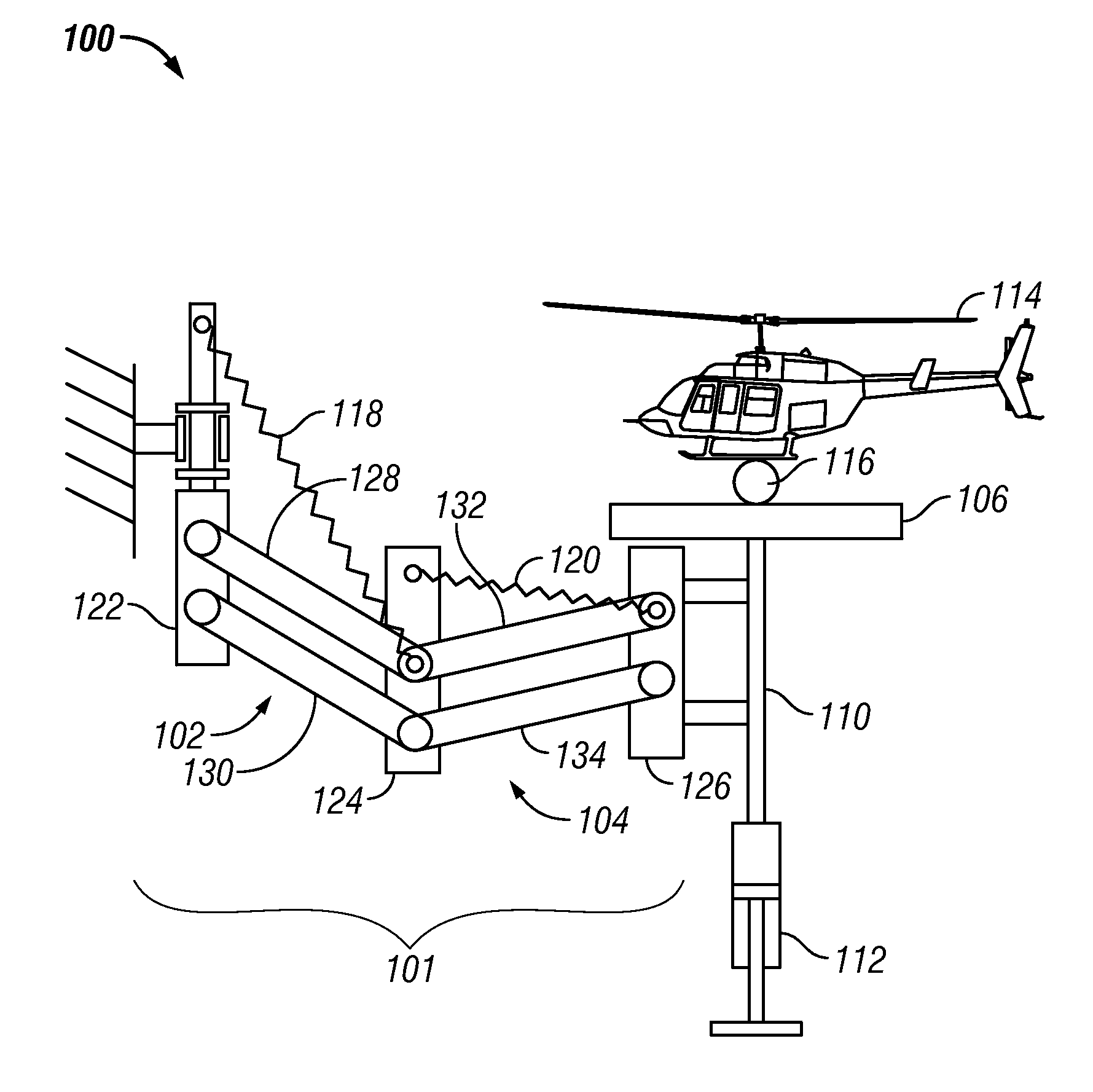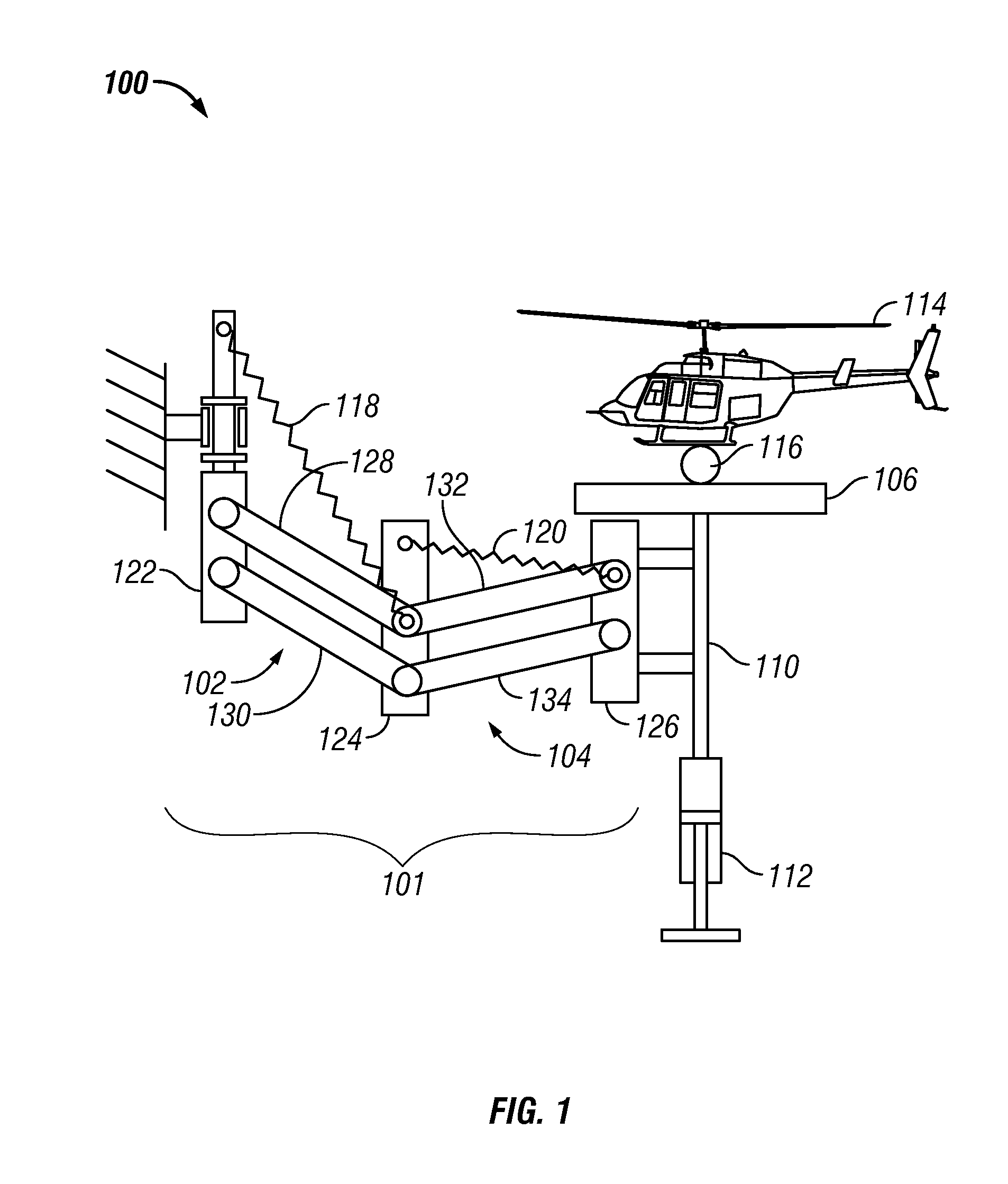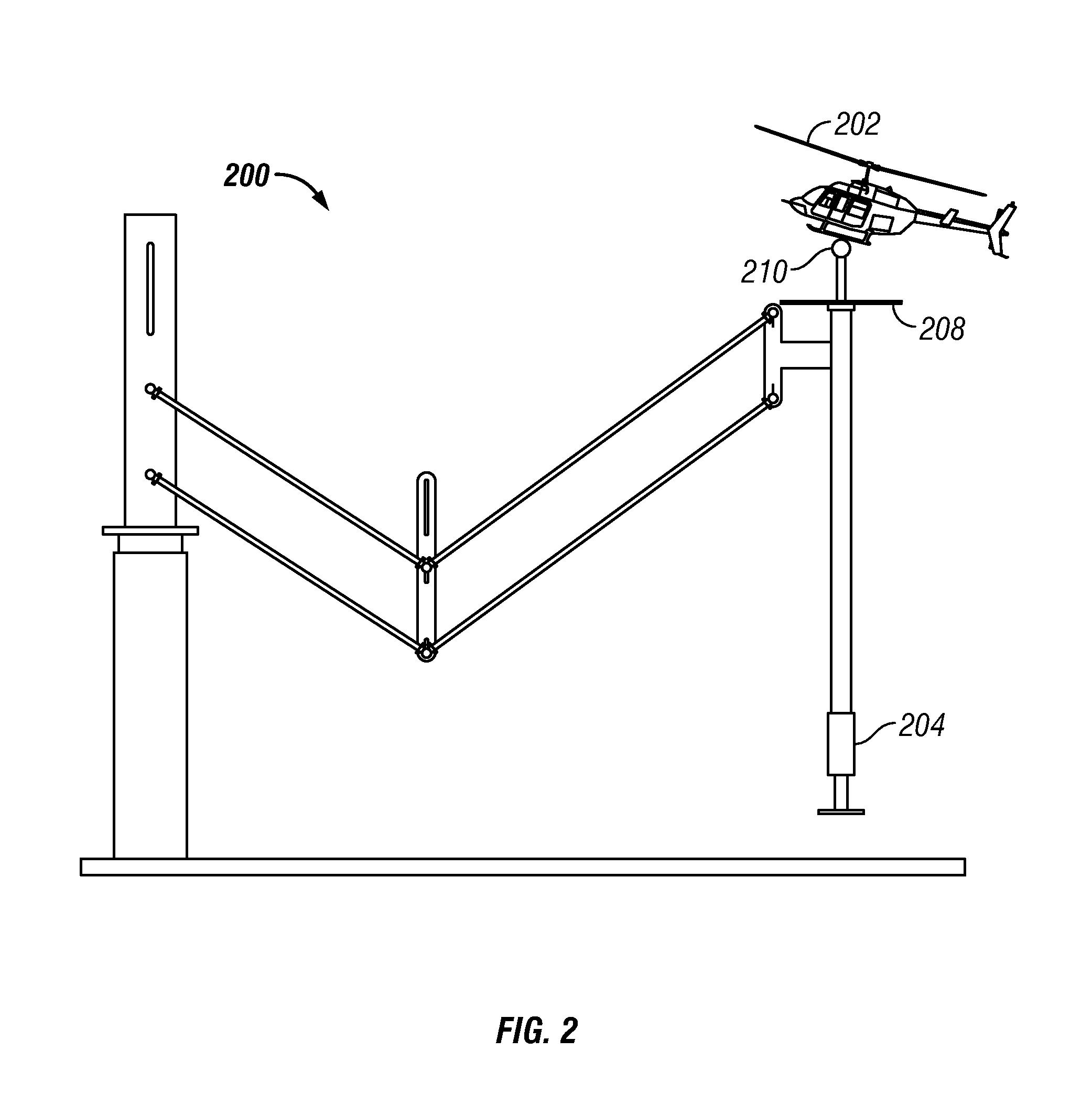Multi-degree-of-freedom test stand for unmanned air vehicles
a technology of unmanned air vehicles and test stands, applied in the field of multi-degreeoffreedom (dof) gravity balanced uavs and/or mav test stands, can solve the problems of flying vehicles that can crash or fly out of control, ground-fixed test stands that add extra load to the test vehicle, and extra load may be too large to cope with extra load, so as to reduce the impact of uav during landing
- Summary
- Abstract
- Description
- Claims
- Application Information
AI Technical Summary
Benefits of technology
Problems solved by technology
Method used
Image
Examples
example 1
[0064]By applying the equations discussed above, one embodiment of a gravity balanced test stand was built. The following parameters of this embodiment were specified with respect to the working space requirements, i.e.
m1=m2=2.5 kg; m3=2 kg; m12=1.5 kg
l1=l2=0.5 m; r1=r2=0.25 m;
d1=d2=0.2 m; g=9.81 m / s2 (8)
[0065]Substituting these parameters into Eq. (6) leads to
k1=539.55 N / m; k2=171.68 N / m (9)
[0066]With these spring stiffness values and the system parameters from the design, the gravity force of the system is balanced.
[0067]To compare the stand with and without gravity balancing, a dynamic simulation model of a test stand was created and is illustrated in FIG. 6. In this example, the parameters of stand 600 in this model are the same as those given above. The mass of UAV 602, which is a small helicopter in this example, is approximately mH=3 kg.
[0068]In this example, a concentrated lifting force was applied to UAV 602 at its center of mass (CM), such that UAV 602 hovered at initial...
example 2
[0070]In a second example, a sinusoidal disturbance was added to the lifting force along the Z direction (the vertical direction). The resulting external force is expressed as
FL=FZ+0.05mHg sin(10t) (10a)
FA=FX (10b)
where FZ and FX are the required lifting and axial forces. As a reference, the behavior of a UAV without the stand was also simulated. FIG. 9 is a graph which illustrates the vertical displacement of a UAV subject to disturbance under these three conditions.
[0071]As illustrated in FIG. 9, due to the sinusoidal disturbance, the UAV no longer hovers at the initial position. Instead, a stand without gravity balancing constrains the motion of a UAV and leads to an oscillation around the initial position. The gravity balanced stand allows the UAV to drift up continuously, which is closer to the real behavior of a free flying UAV. Because of the dynamic loading (i.e. the inertia force) applied to the UAV by the stand, the UAV with a gravity balanced stand drifts less than the ...
example 3
[0072]The force in a joint between a UAV and a stand was also measured to illustrate the effect on the UAV that is added by the stand, as illustrated in FIGS. 10 and 11.
[0073]Both the vertical (Z) and the horizontal (X) joint force of the gravity balanced system remains close to zero, except for a slight vibration due to the added periodical disturbance. However, the forces of the non-gravity balanced system are not close to zero and vary with the initial position. The results seen in FIGS. 10 and 11 show that a test stand with gravity balancing places much less burden on a tested vehicle, which allows the vehicle to be tested under a condition much closer to reality.
[0074]The gravity balancing technology as described in the embodiments of the present invention results in a test stand that compensates its own weight for all working configurations. Thus, the gravity force of the stand does not add any load to the vehicle being tested with the stand. Gravity balancing is preferably ac...
PUM
 Login to View More
Login to View More Abstract
Description
Claims
Application Information
 Login to View More
Login to View More - R&D
- Intellectual Property
- Life Sciences
- Materials
- Tech Scout
- Unparalleled Data Quality
- Higher Quality Content
- 60% Fewer Hallucinations
Browse by: Latest US Patents, China's latest patents, Technical Efficacy Thesaurus, Application Domain, Technology Topic, Popular Technical Reports.
© 2025 PatSnap. All rights reserved.Legal|Privacy policy|Modern Slavery Act Transparency Statement|Sitemap|About US| Contact US: help@patsnap.com



